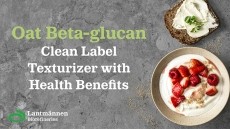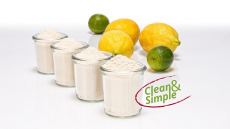Food makers to stay on the alert for contaminated guar gum
Guar gum is present in a wide array of food applications, used by makers as a thickening agent in formulations ranging from dressings to instant soups.
But last year, Swiss importer Unipektin recalled supplies of guar gum hailing from India following the discovery of high dioxin levels. The dioxins were linked to contamination with pentacholorphenol (PCP), a fungicide used in food and feed.
In the aftermath of the recall, the European Commission tightened up imports of guar gum from India.
A Commission spokesperson confirmed to FoodNavigator.com that new rules from 5 May this year mean that all guar gum and guar gum products entering the EU-27 bloc have to be tested by the Indian authorities, or by food operators once the products have arrived at the border.
As a result of these new measures, the Czech Agricultural and Food Inspection (CAFIA) informed the Commission - through the bloc's rapid alert system - last week that it had detained one of two guar gum batches destined for the market.
The inspectors retained a 10 ton batch of guar gum (E412) after "higher levels of pentachlorophenol (0.046 mg/kg - ppm) were confirmed", following submission of laboratory analyses from the importer.
Exposure to pentachlorophenol, once used widely as a pesticide and wood preservative, is harmful to the liver, can have reproductive and developmental effects, as well as causing increases in body temperature.
General populations can be exposed to very low levels of pentachlorophenol in contaminated indoor and outdoor air, food, drinking water and soil.
"As the defective batch did not reach the market at all, there is no health risk to consumers," said Jakub Šebesta, the CAFIA director general.
The inspection issued a permit for the second batch, which complied with the requirements, to enter the market, added the CAFIA.
The market
Guar gum, produced from guar splits, which in turn is derived from guarseeds, is mainly cultivated in India and Pakistan.
Guar gum is big business for India, which supplies between 80 and 85 per cent of this widely used additive to the global market.
According to Leatherhead's 'The Food Additives Market - global trends and developments' (April 2008) report, food use for guar gum is about 45,000 tonnes worldwide.
The report values the total hydrocolloid gum market at $760m.
Guar gum represents about a sixth of this overall market, pulling in some $125 million in sales in 2007.
Growth is decent, with the Leatherhead figures showing the guar gum market grew by 4.5 per cent from 2004 to 2007.
Although this growth falls in the shadow of the 9.5 per cent recorded for locust bean gum, and 9.1 per cent for gum arabic for the same period, 2004 to 2007.
Looking ahead to 2009, The Hindu paper reported last week that Jeevan Gandhi, president of India's Guar Gum Manufacturers’ Association had warned exports of guar gum from the country could be lower than last year as the US and European Union witness a slowdown in their economy.
"Our shipments to the US may come down to 10,000 tonnes from 15,000 tonnes as growth in food consumption could be affected,” he said.
























